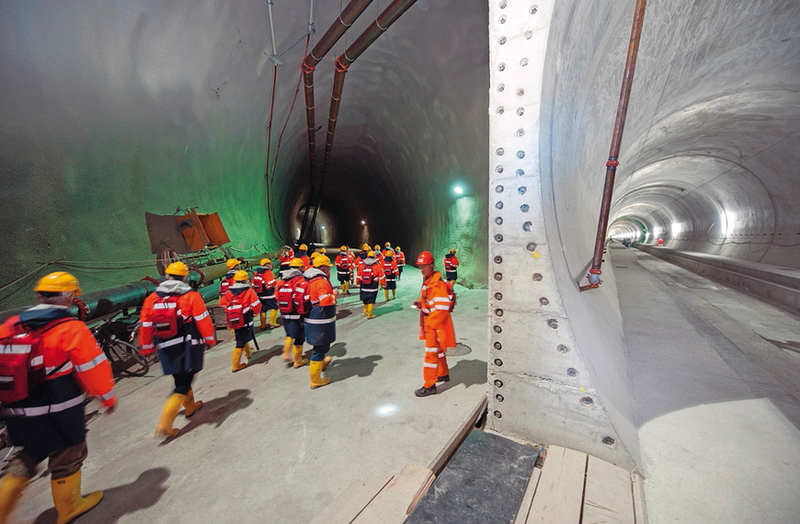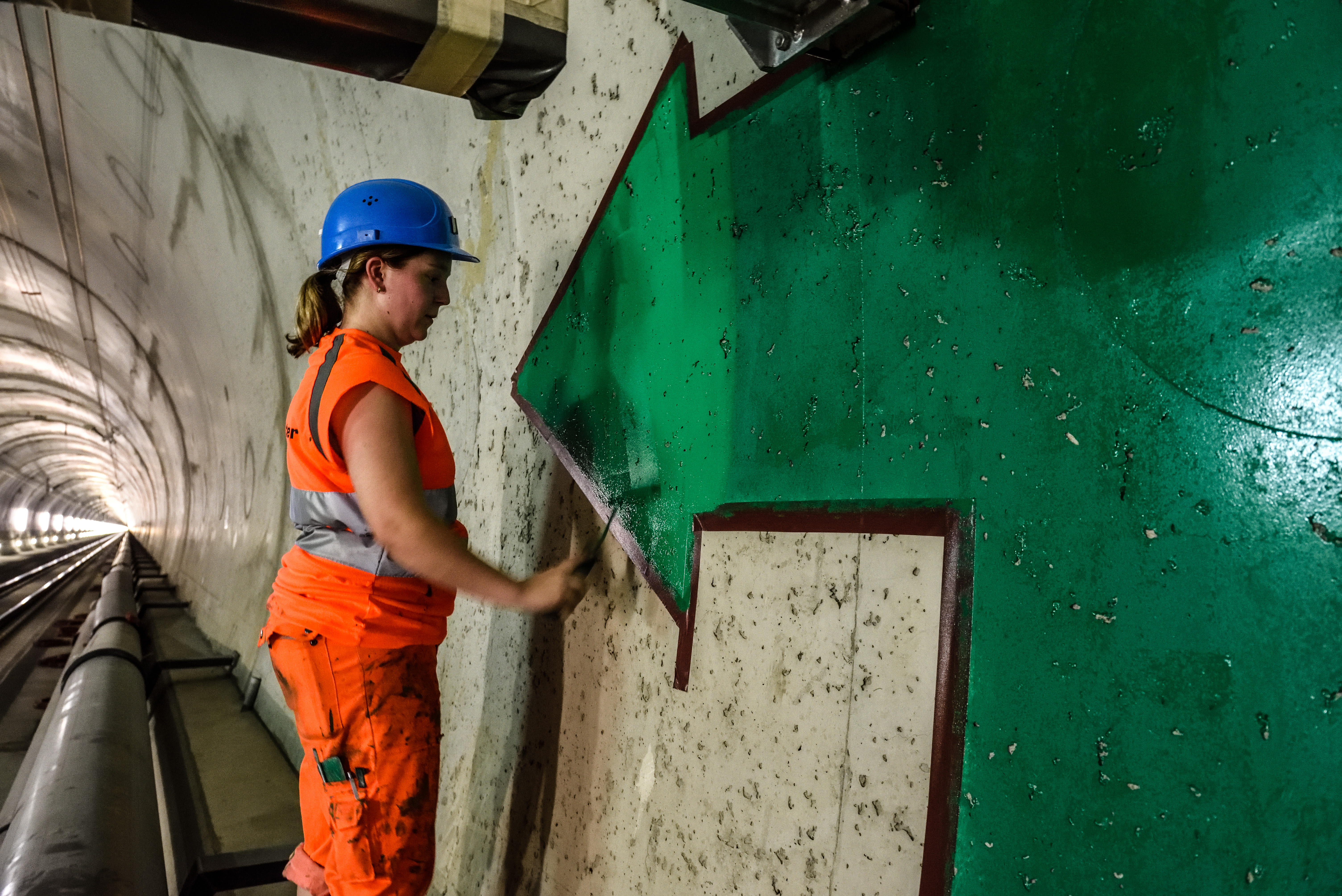The Gotthard Tunnel: also a women's story
The world's longest rail tunnel, 57km long, opened on 1 June 2016. This feat of Swiss engineering, which crosses the Alps and links the cantons of Uri and Ticino, was built by AlpTransit Gotthard SA, a subsidiary of the Swiss Federal Railways (SBB). AlpTransit has a workforce of 170, including 53 women, which makes it something of an exception in the construction and infrastructure engineering sector.
Women make their mark
Sissi, Heidi, Gabi and Gabi II: these are the names of the 450-metre long tunnel boring machines that dug the Gotthard Tunnel under the Alps. These feminine monikers do little justice to the hard work and tremendous contribution women have made to this gigantic building project for more than 20 years. Many women, in particular professionals from the environment and planning sectors, have dedicated years of their lives to ensure the success of the project. Christine Ebenhög, an engineer of German origin who has lived in the commune of Personico in Ticino near the south portal of the tunnel since 2003, is one of them.
Christine Ebenhög, balancing family life and a busy work schedule
Christine, a native of Erlangen in Bavaria with a degree in engineering from the University of Darmstadt, was just 32 when she moved to Ticino with her husband. As a mother of three, balancing family life and a busy work schedule was quite a challenge. But she was highly motivated and unafraid to stand her ground in a male-dominated world. Christine recalls: "As a woman, in the beginning I had to have sharp elbows to hold my own. The biggest challenge was organising our schedules, particularly once we had our fourth child. But because we both worked in the same community of engineers, my husband and I were able to juggle our schedules to make sure that one of us was always with the kids."

Always on the job
Balancing work and family life is no mean feat, especially when the job involves a large construction site and big machinery. Christine's job was to help supervise the creation of an extensive system of tubes for the tunnel: 152km of wells and galleries were dug through rock. For Christine, this meant working just about every day of the week. "I was always at the office and once a month I went into the tunnel," recalls Christine. " I often worked weekends and evenings at home. It was stressful but also thrilling. I particularly enjoyed finding compromises between our team of engineers and experts from other fields, such as safety, ventilation systems and measurement engineers, without ever losing sight of the overall objectives of the project."

Community outreach
Many of Christine's female colleagues worked part-time, mainly as environmental and planning specialists. It was a particularly sensitive mission because the environment is an issue of vital importance for AlpTransit. "My female colleagues were the main point of contact with local people living near the tunnel, and one of their jobs was to make sure that the project was understood and accepted. Female engineers take a more tactful approach to this sort of task than their male colleagues. The working arrangements in the tunnel itself, however, made it difficult for women to be present on site. But all the female colleagues I came into contact with did a great job of balancing family life and work."

The end of an adventure?
The tunnel inaugurated in June and opened for traffic in December 2016. This marked another success in the long railway history of the Gotthard tunnels, which began with the opening in 1882 of the first double-track railway tunnel (15km long). The end of the adventure for Christine Ebenhög? "I'm already thinking about the construction of the second tunnel through the Gotthard massif, which was approved by the Swiss electorate in a popular vote on 28 February. I am proud to be a member of the team that will build this tunnel. Once a tunneller, always a tunneller!"
More stories about the Gotthard :
→ The legend of the Gotthard pass
→ The construction of the world's longest environmentally friendly tunnel
→ When rock from the Gotthard Base Tunnel heads to the beach
→ The Gotthard Tunnel: a women's story
→ Across the Gotthard on foot and by train
For more information : Swiss Travel System






